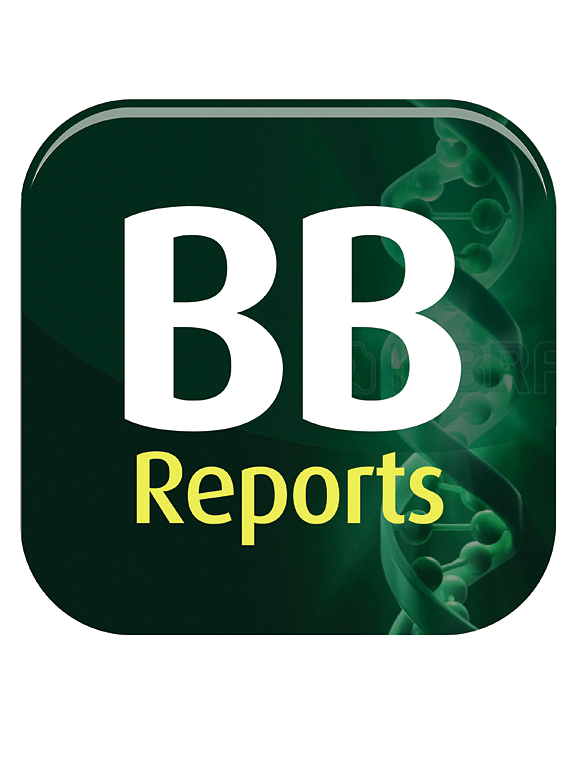多发性硬化症外周血单个核细胞的整合转录组学研究探索了该疾病的潜在生物标志物
IF 2.3
Q3 BIOCHEMISTRY & MOLECULAR BIOLOGY
引用次数: 0
摘要
尽管血液rna很重要,但它们作为多发性硬化症(MS)的潜在诊断标志物尚未得到全面研究。本研究通过整合外周血单个核细胞的GSE21942和GSE203241微阵列图谱,探索该疾病的潜在生物标志物。方法鉴定差异表达基因(DEGs)后,进行功能富集分析,构建PPI和miRNA-mRNA调控网络。在实施加权基因共表达网络分析(WGCNA)并发现ms特异性模块后,将差异表达分析和WGCNA的收敛结果用于机器学习方法。最后,通过受试者工作特征(ROC)分析评估突出基因的诊断效能。结果基于scopg1、RPN1和KDM3B在整合数据中可接受的诊断功效,以及GSE141804和GSE146383数据集作为外部验证集,最初将其作为潜在的生物标志物。然而,考虑到它们在整合数据中下调,而在验证集中上调,它们不能被视为该疾病的潜在生物标志物。除了这种不一致性之外,在其他外部数据集(GSE247181、GSE59085和GSE17393)中评估它们的诊断性能并没有显示它们的诊断功效。可能由于样本量小和未考虑的混杂因素,本研究无法揭示有希望的MS血液生物标志物。考虑到pbmc和血液标本是鉴定生物标志物的宝贵来源,需要进一步的转录组学分析来发现该疾病的潜在生物标志物。本文章由计算机程序翻译,如有差异,请以英文原文为准。
Integrated transcriptomics of multiple sclerosis peripheral blood mononuclear cells explored potential biomarkers for the disease
Background
Despite their importance, blood RNAs have not been comprehensively studied as potential diagnostic markers for multiple sclerosis (MS). Herein, by the integration of GSE21942 and GSE203241 microarray profiles of peripheral blood mononuclear cells, this study explored potential biomarkers for the disease.
Methods
After identification of differentially expressed genes (DEGs), functional enrichment analyses were performed, and PPI and miRNA-mRNA regulatory networks were constructed. After implementing weighted gene co-expression network analysis (WGCNA) and discovering MS-specific modules, the converging results of differential expression analysis and WGCNA were subjected to machine learning methods. Lastly, the diagnostic performance of the prominent genes was evaluated by receiver operating characteristic (ROC) analysis.
Results
COPG1, RPN1, and KDM3B were initially highlighted as potential biomarkers based on their acceptable diagnostic efficacy in the integrated data, as well as in both GSE141804 and GSE146383 datasets as external validation sets. However, given that they were downregulated in the integrated data while they were upregulated in the validation sets, they could not be considered as potential biomarkers for the disease. In addition to this inconsistency, evaluating their diagnostic performance in other external datasets (GSE247181, GSE59085, and GSE17393) did not reveal their diagnostic efficacy.
Conclusions
This study could not unveil promising blood biomarkers for MS, possibly due to a small sample size and unaccounted confounding factors. Considering PBMCs and blood specimens as valuable sources for the identification of biomarkers, further transcriptomic analyses are needed to discover potential biomarkers for the disease.
求助全文
通过发布文献求助,成功后即可免费获取论文全文。
去求助
来源期刊

Biochemistry and Biophysics Reports
Biochemistry, Genetics and Molecular Biology-Biophysics
CiteScore
4.60
自引率
0.00%
发文量
191
审稿时长
59 days
期刊介绍:
Open access, online only, peer-reviewed international journal in the Life Sciences, established in 2014 Biochemistry and Biophysics Reports (BB Reports) publishes original research in all aspects of Biochemistry, Biophysics and related areas like Molecular and Cell Biology. BB Reports welcomes solid though more preliminary, descriptive and small scale results if they have the potential to stimulate and/or contribute to future research, leading to new insights or hypothesis. Primary criteria for acceptance is that the work is original, scientifically and technically sound and provides valuable knowledge to life sciences research. We strongly believe all results deserve to be published and documented for the advancement of science. BB Reports specifically appreciates receiving reports on: Negative results, Replication studies, Reanalysis of previous datasets.
 求助内容:
求助内容: 应助结果提醒方式:
应助结果提醒方式:


